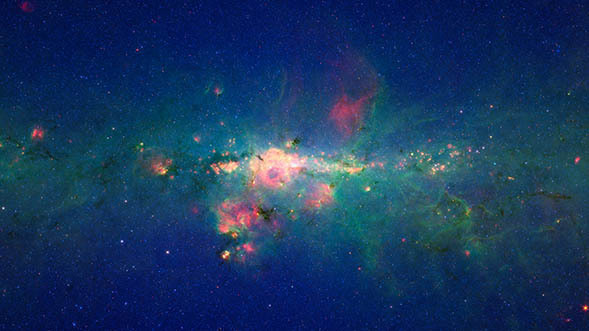
Spitzer Space Telescope shows that the M51 spiral galaxy is rich in dust, and actively forming new stars, while its blue companion galaxy hosts an older stellar population.
Infrared emission from most galaxies comes primarily from three sources: stars, interstellar gas, and dust. With NASA's Spitzer Space Telescope astronomers could see which galaxies are furiously forming stars, locate the stellar nurseries, and pinpoint the cause of the stellar baby boom.
In looking at our own Milky Way galaxy, Spitzer gave astronomers valuable insights into the structure of our home galaxy by showing them where all the new stars are forming.
Spitzer also played a significant role in helping astronomers understand Ultra Luminous Infrared Galaxies, or ULIRGs. These galaxies emit more than 90 percent of their light in the infrared, and are primarily found in the distant universe. With Spitzer's infrared eyes, astronomers could determine whether the source of the ULIRG's infrared glow is from extreme star formation or an active central supermassive black hole, or both.



